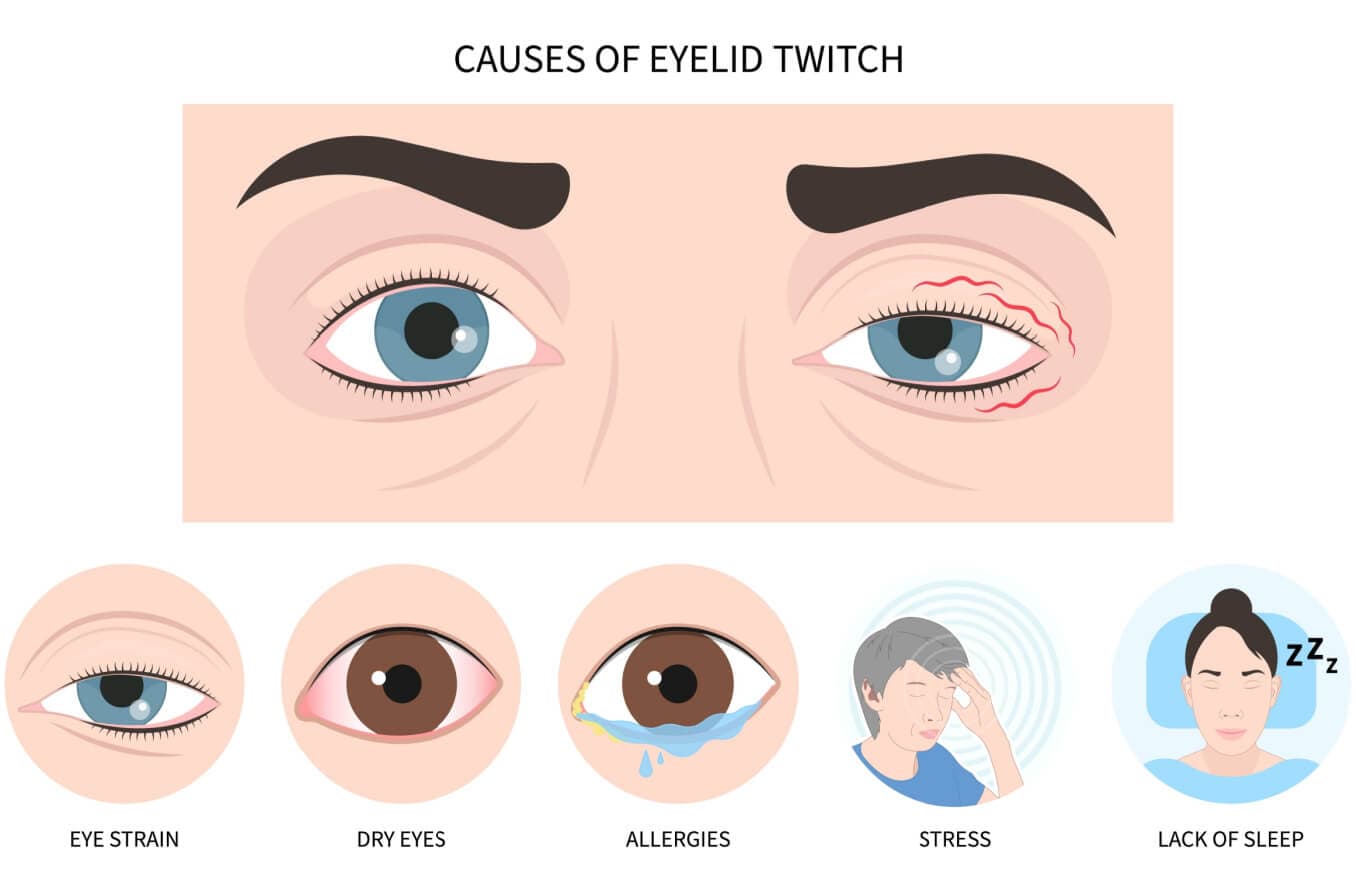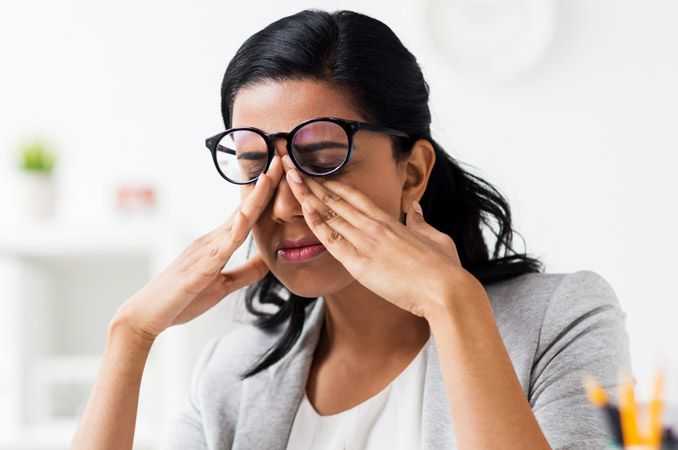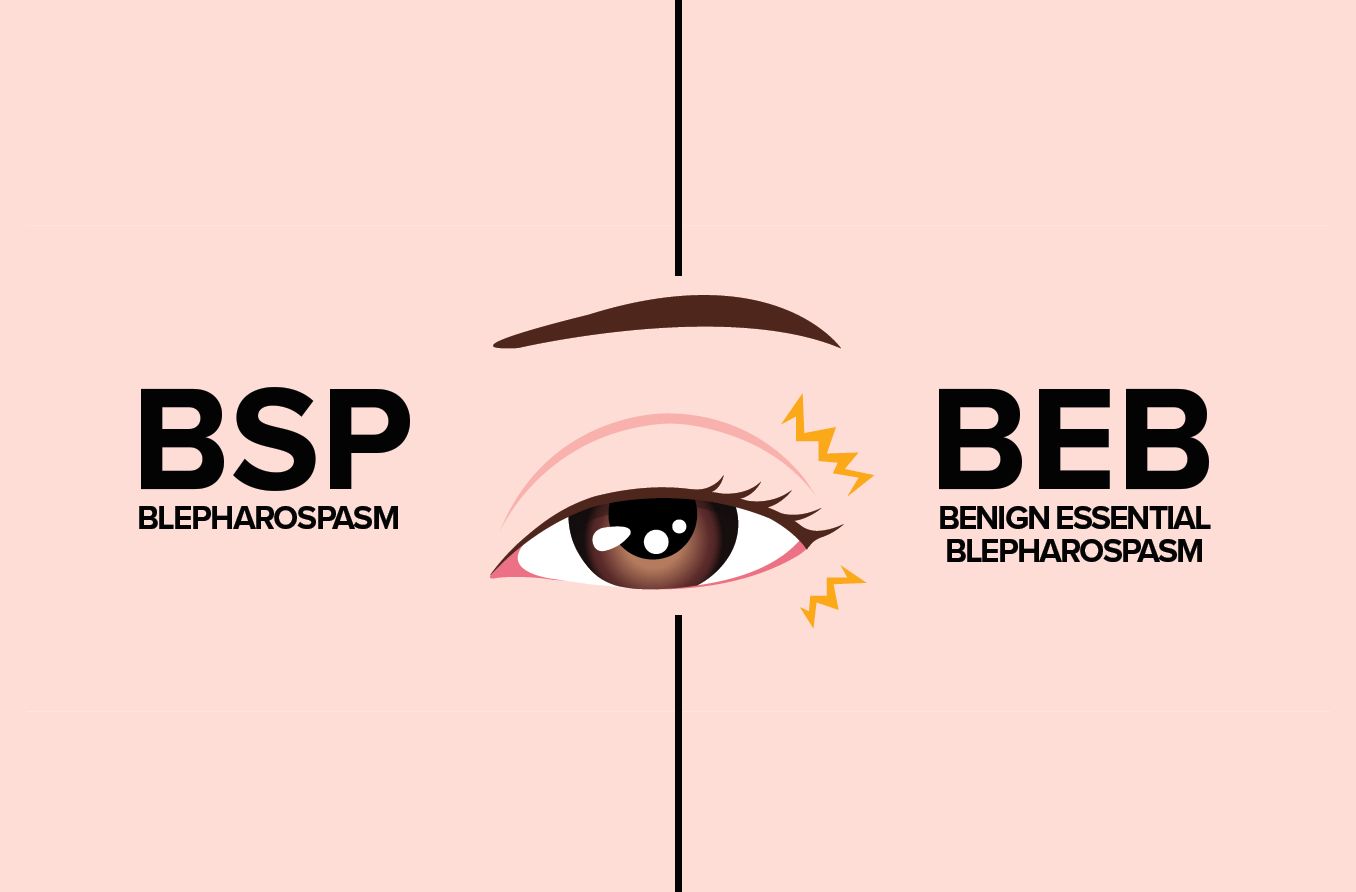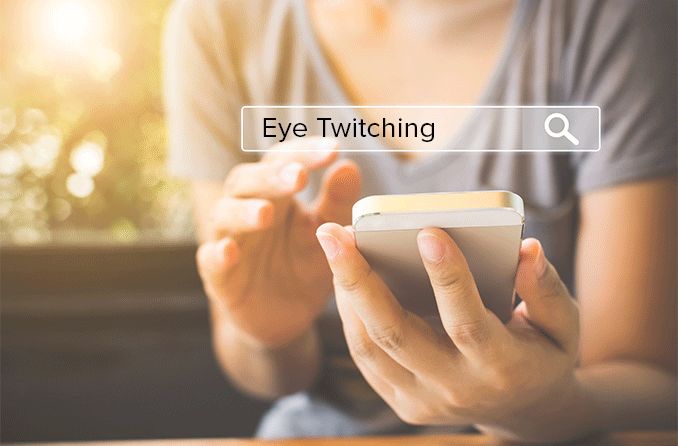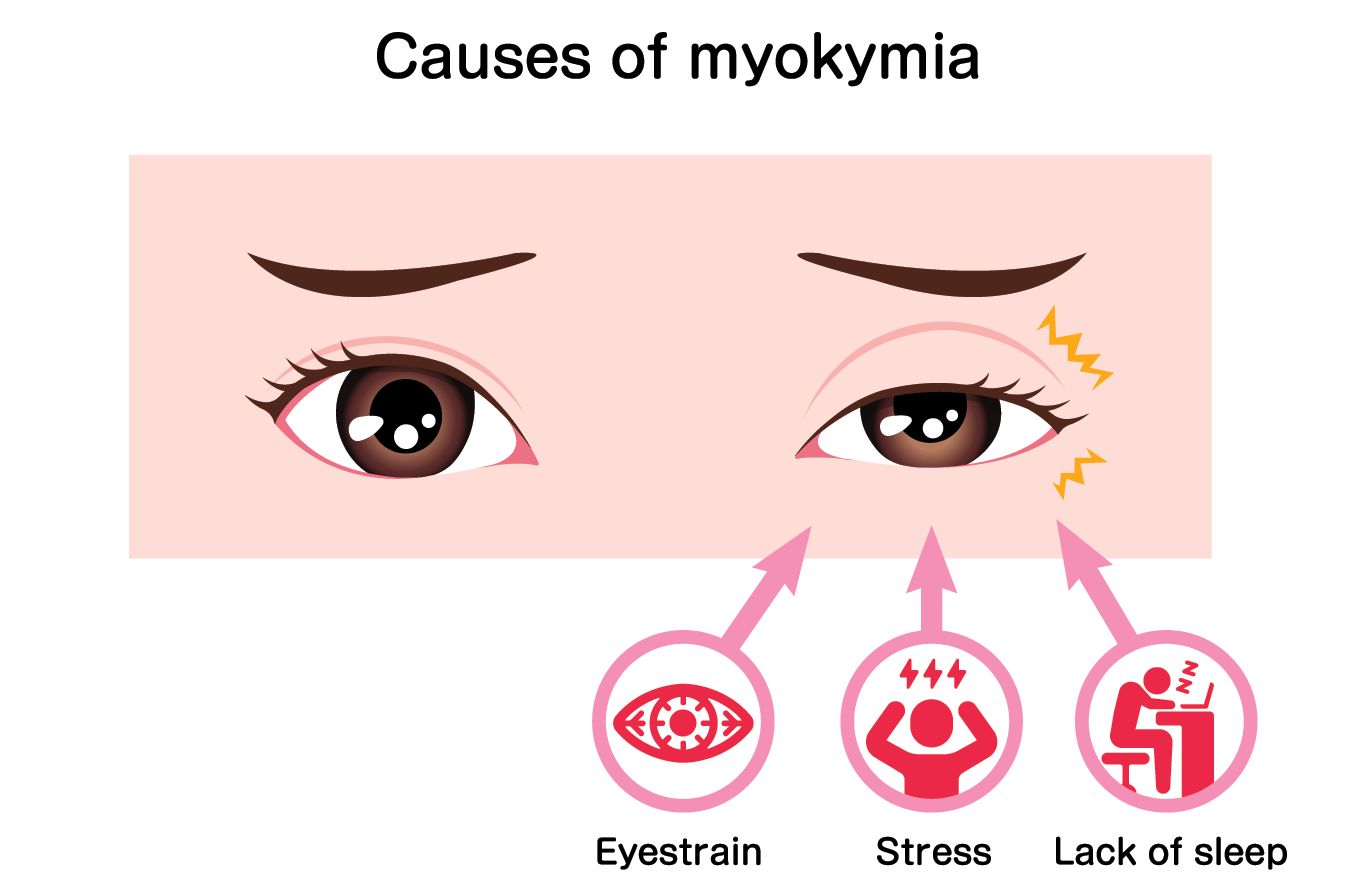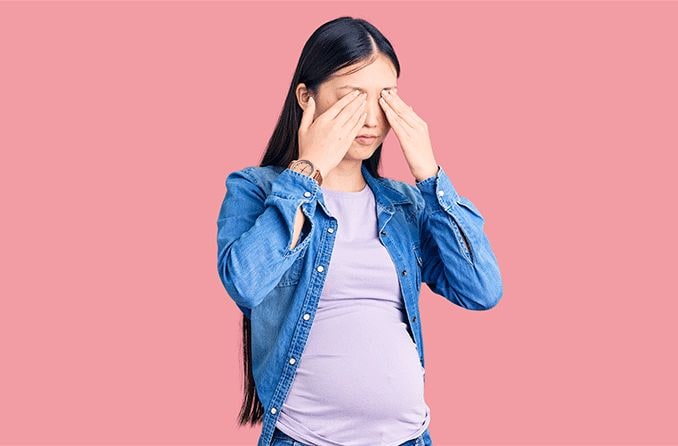About eye twitches, tics or spasms
Eye twitching, also known as myokymia or blepharospasm, is a common thing that most people experience at one point or another. It’s often described as an involuntary tic or “jump” in the upper or lower eyelid muscle . It can last anywhere from a few seconds to several days.
While a twitchy eyelid can be annoying, it is usually harmless and goes away on its own after a while. For those who would like to speed up the recovery process, there are a few ways to help calm an eye tic.
Simple actions, including stress management, balanced nutrition and better sleeping habits, can help not only eliminate eye tics but prevent them from occurring altogether.
At-home treatment for minor eye twitching
Your lifestyle can affect how often you get eyelid tics and how long they take to go away. By reducing or removing certain triggers, you may be able to get rid of an ongoing eye spasm and reduce your chances of getting another one in the future.
Some at-home eye twitching treatment methods include:

Infographic: How To Stop Eye Twitching [Enlarge]
Finding ways to manage stress
Stress is thought to be the most common reason for ticking eyelids. High stress levels can interfere with many of the body’s natural processes by releasing stress hormones in the brain.
These hormones notify the brain of a perceived “threat,” and the brain responds by preparing the body to fight, flee or freeze. Part of the body’s stress response is an increase in muscle tension and electrical activity in the nervous system.
The muscle tension and increased electrical activity could cause muscle spasms on their own. When combined, they create a perfect recipe for an eye tic.
Reducing stress isn’t always easy; there are some sources of stress that you can’t always help. But integrating healthy habits like walking, exercise and meditation into your daily routine can help offset the effects of stress.
SEE RELATED: Can exercise improve cognitive performance?
Maintaining a healthy sleep schedule
Never underestimate a good night’s rest. Sleep deprivation can cause an imbalance in certain hormones, like cortisol (one of the stress hormones mentioned earlier). Studies suggest that lack of sleep can cause an overproduction of cortisol, which makes muscles more likely to spasm.
Creating a healthy sleep schedule takes work, but it can pay off with numerous health benefits, including reducing or eliminating a jumpy eyelid.
For starters, try reducing your caffeine consumption — especially later in the day. Other ways to achieve a good night’s rest are limiting nighttime screen use and going to bed at the same time every night.
Reducing caffeine, alcohol and tobacco intake
Consuming alcohol and/or caffeine in moderation should not cause an eye spasm. However, excessive consumption can cause your eye muscles to start jumping. Here’s why:
Caffeine is a stimulant that, when consumed, interacts with energy molecules in your cells. Too much caffeine can send these cells into overdrive and can cause abnormal impulse firing, resulting in muscle spasms.
While details on alcohol’s direct effect on the muscles are still unclear, chronic alcohol use can result in a condition called alcoholic myopathy. The condition is characterized by dysfunction in the skeletal muscles. Common symptoms of alcoholic myopathy include muscle weakness, stiffness, cramping, and twitches or spasms.
When using tobacco, whether through smoking , chewing or other forms of use, nicotine enters the bloodstream. It travels to the brain and binds to receptors that monitor heart rate, movement and alertness. When bound to these receptors, nicotine can stimulate muscle movement, which can cause muscle tics in the eye.
By reducing how much caffeine, alcohol and tobacco you consume, you might be able to get rid of a stubborn twitch or prevent another one altogether.
Drinking more water
Between 55% and 60% of the body is made up of water. So, for everything inside the body to function as it should, proper hydration is key.
Being dehydrated makes it difficult for your body to carry important nutrients to the muscles. This can lead to a salt imbalance and, in turn, muscle spasms.
There’s no set amount of water that you must drink every day. It varies depending on factors like a person’s size, activity level and metabolism, as well as the climate in which they live (warmer climates require more water).
Rather than telling yourself you need to drink a certain amount of water each day, keep an eye out for signs that you’re dehydrated. Common symptoms of dehydration include:
Thirst
Dry mouth and/or lips
Not urinating often
Urine that is dark yellow and has a strong odor
Knowing the signs of dehydration can help you recognize when to drink water, which can help you avoid a dehydration-based eye tic.
Spending less time with digital screens
In addition to its effects on sleep quality, screen overuse is one of the most common causes of eye strain and dry eyes — both of which can result in eye twitching.
Focusing up close for a long time can strain muscles in and around the eyes. Like with other muscles in the body, overuse can cause these eye muscles to become fatigued. It’s common for overworked muscle fibers to trigger spasms.
When you can’t avoid using screens for long hours, use the “ 20-20-20 rule ” to reduce dry eyes and eye strain. The rule suggests that every 20 minutes, a person should look at an object at least 20 feet away for 20 seconds.
Another good way to help your eyes during screen time is to blink. Studies have found that a person’s blink rate decreases significantly when viewing a screen. The natural blink rate is around 18 blinks per minute. During screen time, it drops to less than four blinks per minute — that's a serious drop in blink rate!
Remembering to blink more often and practicing the “20-20-20 rule" can help reduce eye strain and dry eyes associated with twitching.
Vitamin deficiencies and eye twitching
A poor diet can lead to vitamin deficiency, which can cause problems throughout your body, including eyelid spasms. Certain nutrients are important for allowing the nerves and muscles to work together correctly.
Some of the vitamins and minerals that help with nerve and muscle function include:
Magnesium
Potassium
Calcium
Vitamin B12
Vitamin D
Iron
Zinc
If your diet lacks one or more of these nutrients, a vitamin deficiency eye twitch can result.
Try adding healthy, natural foods to your diet — especially foods that are filled with the right nutrients. This may effectively fend off an eye twitch from vitamin deficiency.
Vitamin supplements can help in some situations, but you should talk to your doctor before you start taking them.
Medical treatment for severe eye twitches
Though rare, it’s possible for a minor eye tic to worsen into a more forceful muscle spasm called blepharospasm (BSP). With BSP, muscle tics are stronger, often causing the eyes to squint or close involuntarily.
Blepharospasm, and similar conditions like hemifacial spasm , may require medical treatment to improve or resolve the twitching.
Eye drops
It’s rare for a doctor to prescribe eye drops for eye spasms. This is because they only work temporarily, and results vary.
The most common scenario in which a doctor would use eye drops for eye twitching is if a patient has received Botox injections for the spasms but needs temporary relief until the Botox begins working.
Apraclonidine eye drops, commonly used to treat glaucoma, help blepharospasm symptoms. A study measuring their effectiveness found a reduction in twitching severity. However, the effects were temporary, and symptoms were not completely resolved.
Oral medications
There are certain oral prescriptions that can work as eye twitching treatment. The medications usually fall under the umbrella of muscle relaxants or involuntary movement reducers.
While oral medications for eyelid spasms can offer some improvement, they have their own set of side effects that may not be worth the minor relief they provide.
Medications that can be used to treat an eye twitch include:
Trihexyphenidyl – Antispasmodic/anti-tremor drug. Common brand names: Artane, Trihexane and Tritane
Clonazepam – Sedative used to treat seizures and panic attacks. Common brand name: Klonopin
Lorazepam – Sedative used to treat seizure disorders and anxiety. Common brand names: Ativan and Lorazepam Intensol
Baclofen – Muscle relaxer used to treat muscle spasms and stiffness. Common brand names: Lioresal, Ozobax and Gablofen
Tetrabenazine – Involuntary movement reducer used to treat movement disorders. Common brand name: Xenazine
Talk to your doctor about the side effects associated with the medications above and determine whether they’re a good fit for your treatment plan.
Botox injections
Botox injections are the most common severe-eye-twitching treatment. This is because Botox has proved to be the most effective in calming muscle spasms around the eye.
Using a tiny needle, a doctor will inject the Botox solution into the orbicularis oculi muscles surrounding the affected eye. The Botox weakens the injected muscles, which reduces or eliminates the contractions causing the twitch.
The benefits of Botox should become noticeable within three days of treatment and last three to four months. Once it wears off, more injections will be needed.
Surgery
It is very rare to need surgery for a twitchy eye. Most doctors only consider it if a patient has severe symptoms and shows no improvement from Botox injections or other treatment methods.
Orbicularis myectomy is a surgical procedure in which bits of the eyelid muscles are removed. It is an invasive procedure that can take several weeks to fully recover from. However, the procedure has an 80-90% success rate.
SEE RELATED: Ptosis (drooping eyelid) surgery
Do alternative treatments work?
Usually, the lifestyle changes mentioned above can help remedy a twitchy eye. But if you’re looking for alternative treatments for severe eye twitching, there are a few options that can offer some relief.
Ayurveda is a natural treatment method that originated in India and focuses on the mind-body connection and balance. While there are claims that ayurvedic treatment for eye twitching is successful, there is little to no scientific evidence to support this.
Biofeedback is another mind-body therapy that falls under alternative treatment. It’s been reported that this therapy is rarely successful in managing blepharospasm.
The only alternative treatment for eye twitching that has shown favorable results is acupuncture. Studies suggest that acupuncture for eye twitching can effetely decrease lower eyelid tension associated with blepharospasm.
If you’re interested in alternative treatment for an eye spasm, discuss your options with an eye doctor.
When to see an eye doctor
If eye twitching affects your vision or doesn’t go away after a few weeks, schedule an appointment with an eye doctor or family physician.
While rare, eyelid twitching can be a symptom of another condition. Talk to a doctor if you notice any of the following symptoms in addition to eyelid tics:
One or both eyelids drooping
Eye pain , redness or swelling
Discharge coming from your eye
Difficulty opening the affected eyelid
Muscle spasms in your face or another part of your body
READ MORE: When to worry about eye twitching

